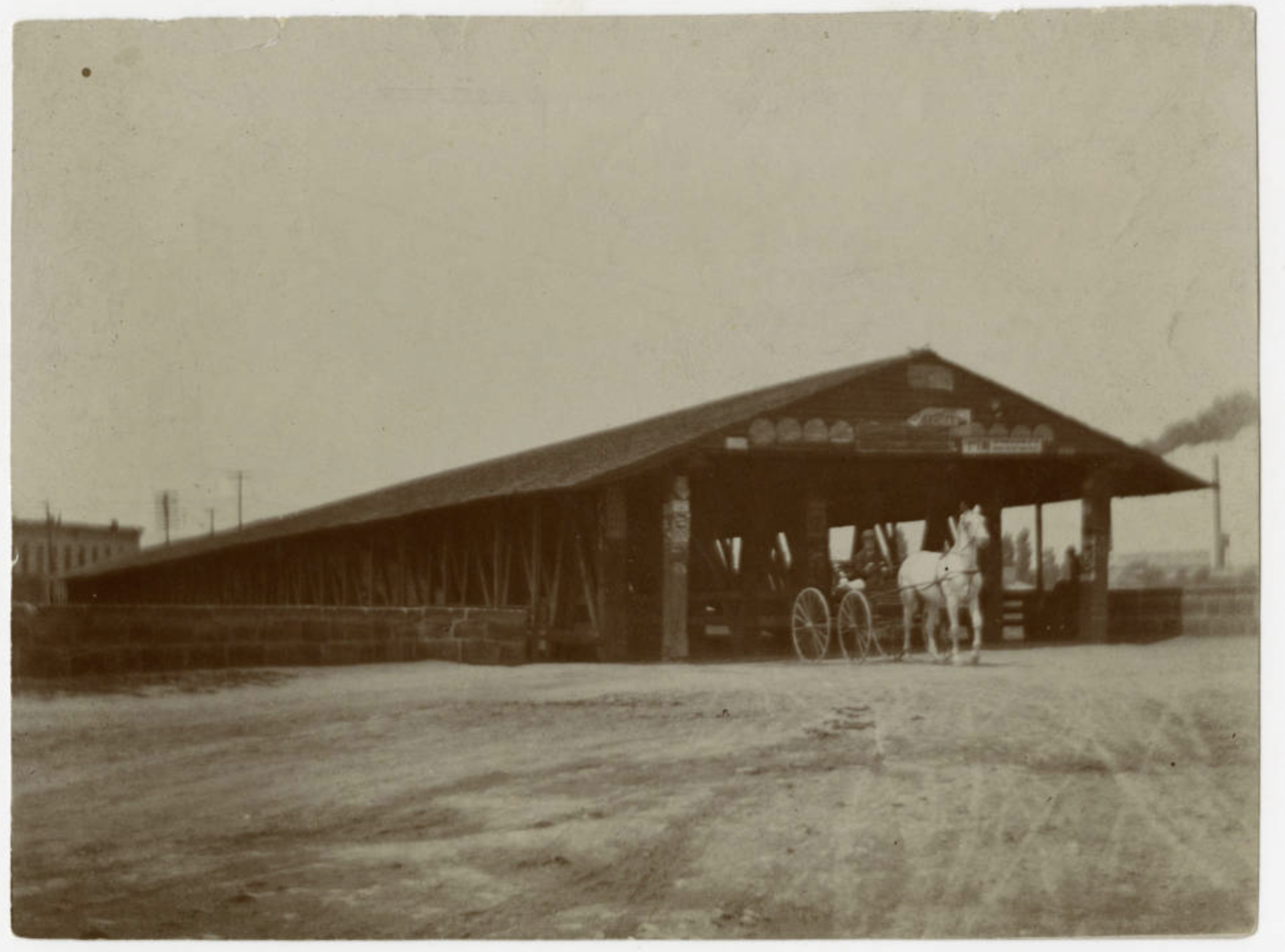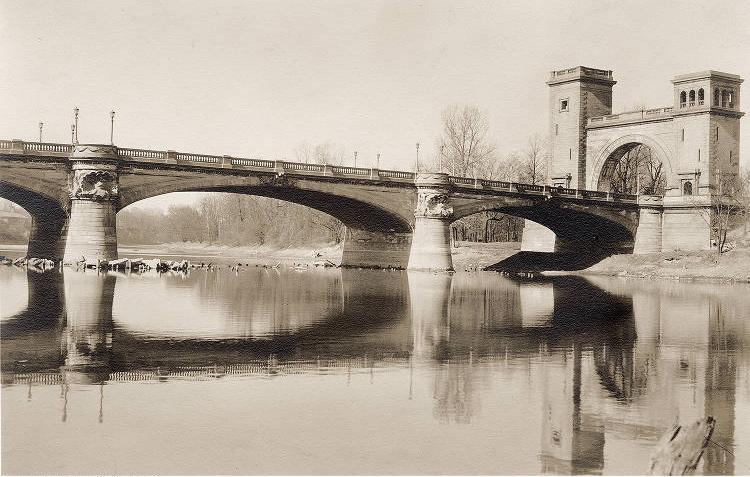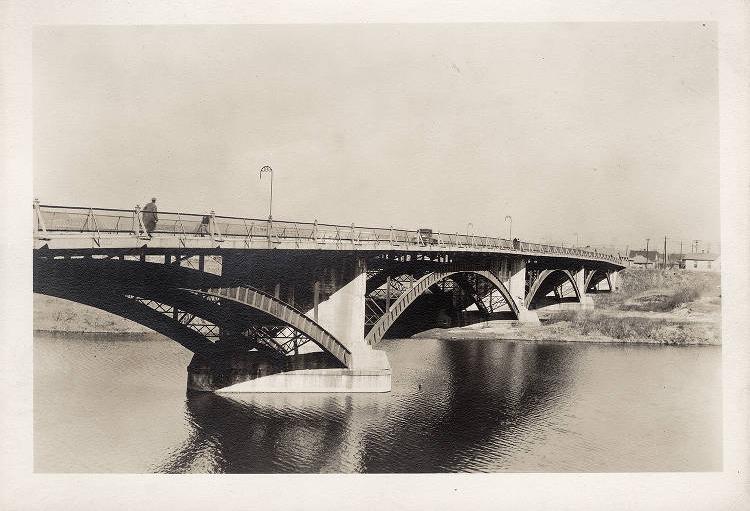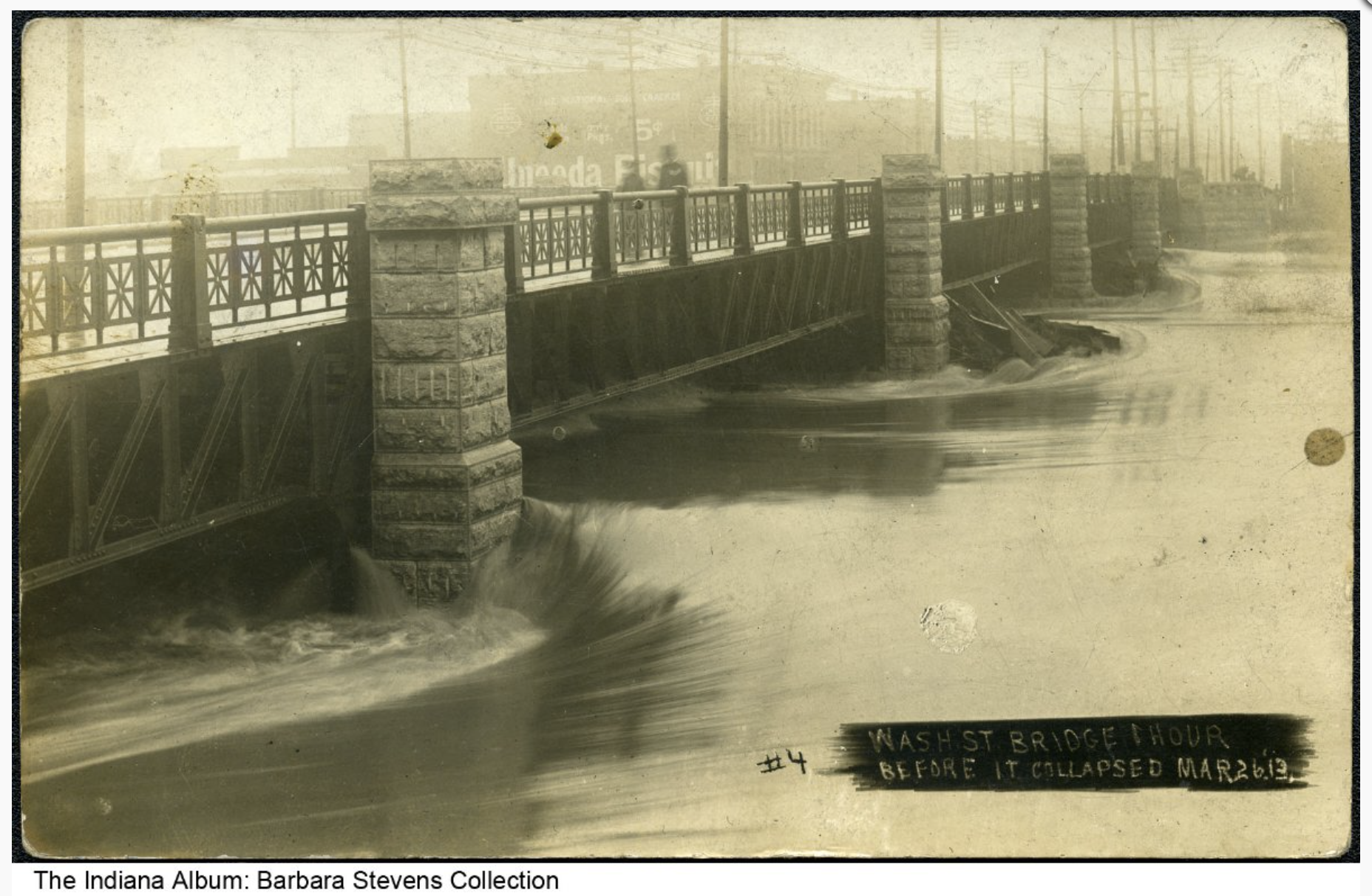Noted landscape architect in 1922 proclaimed Indianapolis’ greatest possessions to be its beautiful bridges. Many waterways, including , , Eagle Creek, and Pleasant Run, pass through the county. Though unnavigable for commercial purposes, these streams interrupted overland travel and transport and required bridging. The resulting structures, first wood, then metal, and later concrete, contributed to the growth, development, and attractiveness of .

White River presented the most formidable obstacle to early pioneers. The construction of the through Marion County in the early 1830s required a bridge over the river. A two-span covered wooden bridge, built in 1834 by Lewis Wernweg and Walter Blake, served until 1872. Soon thereafter, a three-span structure built by the famed bridge-building Kennedy family of Rushville carried Southport Road over White River near West Newton. This bridge became one of the longest wooden bridges in the state.
Metal replaced wood as the preferred bridge material in the 1880s. Railroad companies constructed metal bridges over Marion County’s waterways from the 1880s through the 1930s. The new material was both stronger and safer, as sparks from the increasingly massive railroad locomotives could set fire to wooden structures. Many metal bridges served Marion County’s roads as well, often replacing older wooden bridges. The growth of the city stimulated the construction of many iron bridges including the Kentucky Avenue bridge (1894) over the White River, which was important to the industrial growth of the southwestern part of the county.

In the early 1900s concrete bridges began to appear throughout Indianapolis. Following the disastrous flood of 1913, concrete spans replaced several bridges of both wood and metal that the raging waters had carried away. Some of the early concrete bridges were quite ornate. A good example is the Meridian Street bridge (1913)—one of the architecturally important , which also include Illinois Street (1905), Central Avenue (1905), 30th Street (1906), and Capitol Avenue (1911). These five bridges are listed on the National Register of Historic Places.
Probably the most imposing concrete span ever built in Marion County was the Emrichsville Bridge (1906) over White River south of present 16th Street. The bridge had a stone archway on one end, its corner tower giving the bridge a medieval appearance. The bridge was demolished following World War II because it delayed travelers to “the .”

In the 1930s the WPA provided employment and built several concrete bridges around Marion County, including the Shelby Street Bridge (1938) over Pleasant Run and the New York Street Bridge (1939) over White River. By this time bridges had become more functional in appearance.
After World War II new bridge construction altered the growth patterns for suburban Indianapolis. Most notable was the West 38th Street Bridge (1962) over the White River, which spurred development in the northwest sector of the city. The six-lane bridge linked that area of the county with new Interstate 465, and officials touted the bridge as the “gateway to the West.” Similarly, the 1997 96th Street Bridge across the White River connected with the neighboring City of and facilitated growth in northern Marion County and Southern Marion County.

Most of Marion County’s early bridges are now gone. Only a few remnants of pre-World War I bridge-building remain. These include one covered bridge on private property in , a few metal railroad trusses, and some early ornamental concrete spans. In addition, five bridges of the Fall Creek Parkway, built between 1899 and 1917, are listed on the National Register of Historic Places.


Help improve this entry
Contribute information, offer corrections, suggest images.
You can also recommend new entries related to this topic.

